Blizzard Mock Orange (Philadelphus) – 5 Gallon Pot
$99.85 Original price was: $99.85.$69.90Current price is: $69.90.
- Buy quality, buy with us.
- Your Security is Our Promise
- Sustainable materials, for a better tomorrow.
- SSL encryption, absolutely safe shopping

Plant Details
Spacing: 4-5′ for hedges, 10’+ for space between plants
Description
Named Shrub of the Year by the Nebraska Great Plants Program, ‘Blizzard’ is a more winter-hardy and free-flowering version of the native species, thriving as far north as USDA Zone 2, where temperatures can drop to -50F, and south to Zone 8. It is adored for its abundant clusters of wonderfully fragrant white flowers in late spring to early summer that nearly cover the foliage, filling a large area of the garden with a citrus-like fragrance reminiscent of oranges. Forming a large rounded vase shape shrub 6 to 8 feet tall and wide, and clothed in medium green leaves that turn to yellow in fall, this is one tough but beautiful and low-maintenance plant that you and the beneficial pollinators will always look to its bloom. An excellent addition to the flowering shrub border or around patios, porches, decks and other outdoor living spaces.
Named in honor of Meriwether Lewis, who collected it in 1806 on his expedition’s return trip to St. Louis, the mockorange species Philadelphus lewisii is native to the western U.S. Its cultivar ‘Blizzard’ was selected from a seedling population in Alberta, Canada and was more recently introduced by the Morden Research Station.
Landscape & Garden Uses
Growing 6 to 8 feet tall and equally as wide, the Blizzard Mock Orange is ideal for use as a specimen, in groupings, or as a colorful and fragrant hedge or background plant. Make sure to plant one near patios, porches, decks or other outdoor living and sitting spaces where the flowers and fragrance can be enjoyed from close up. A fine addition to a sunny flowering shrub border, fragrance garden, white theme garden, cut flower garden, and the cottage garden.
Mock Orange is exceptionally easy to grow in most any moist but well-drained soil and lots of sun. Some shade is tolerated however it will flower more profusely in full sun. In hot climates where it will grow it will appreciate some shade or filtered sun during the mid afternoon hours. It is drought tolerant once established, however will appreciate a good weekly soaking during an extended drought in the hottest part of the summer. If you see the leaves starting to wilt just give the plant a good drink. Can be pruned after flowering to control size or for shaping. Avoid pruning in fall or winter as Mock Orange blooms on old wood (the previous year’s growth). Rejuvenation pruning is the favored method as it will encourage heavier budding and blooming. Every few years after flowering simply cut out about one-third of the stems starting with the largest first.
Be the first to review “Blizzard Mock Orange (Philadelphus) – 5 Gallon Pot” Cancel reply
Related products
FRAGRANT PLANTS
FRAGRANT PLANTS
FRAGRANT PLANTS
FRAGRANT PLANTS
FRAGRANT PLANTS


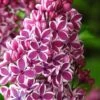







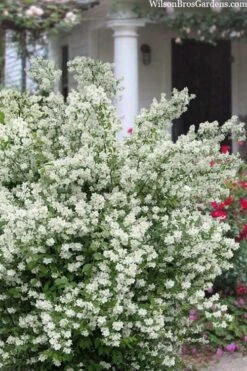


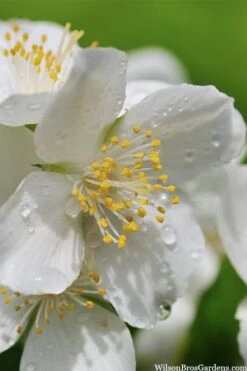
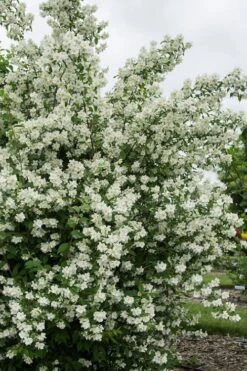
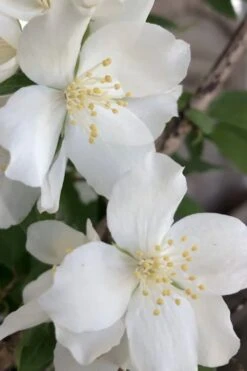
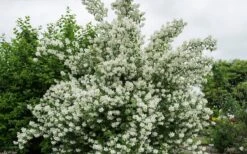


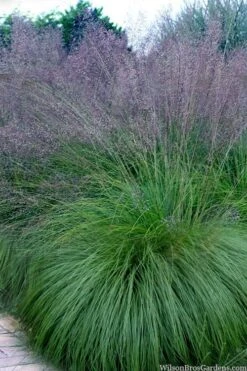

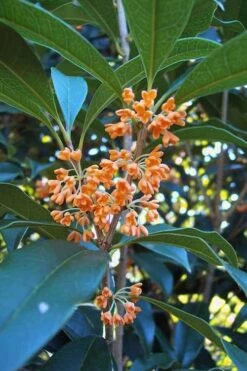

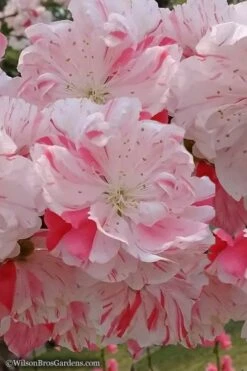









Reviews
There are no reviews yet.